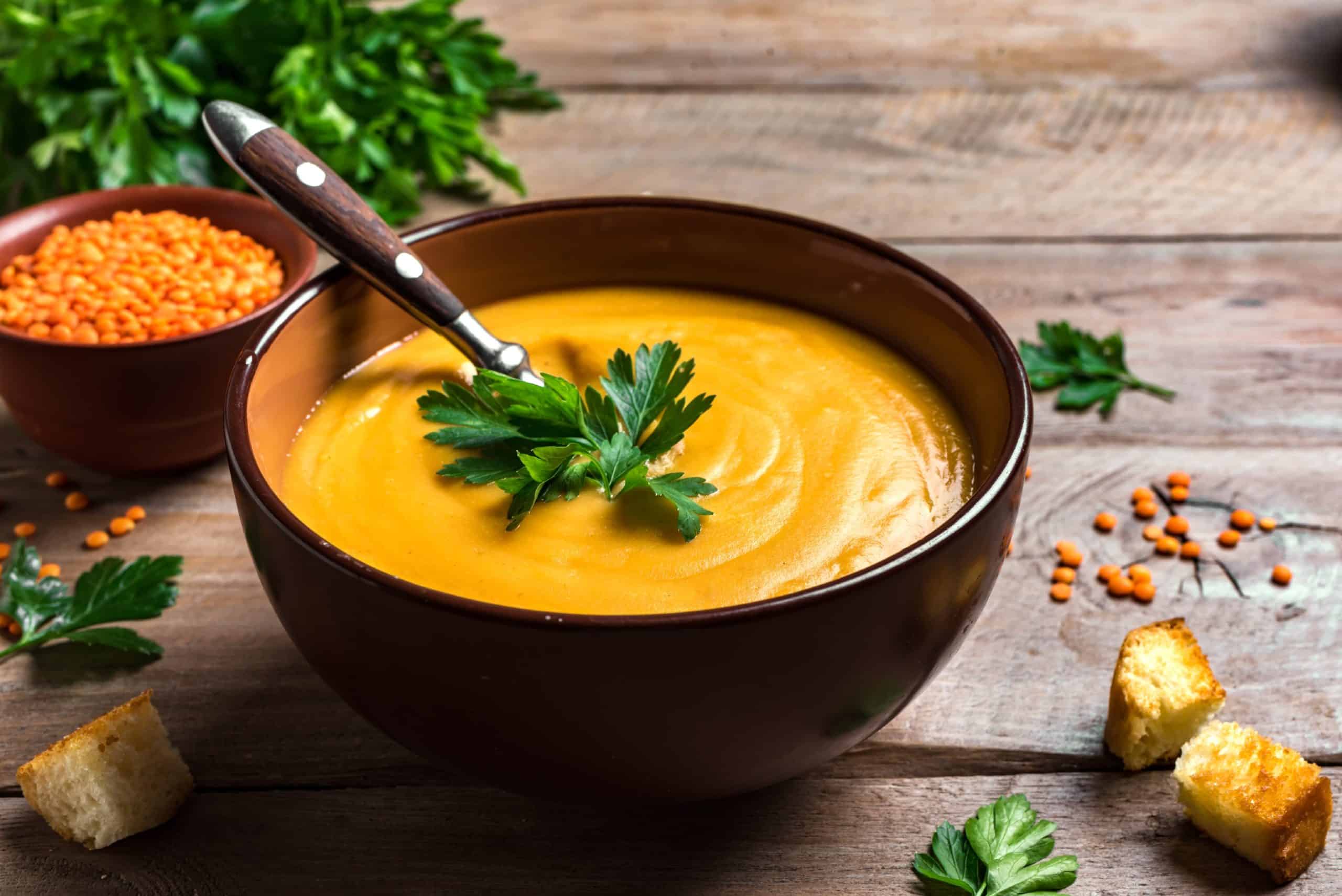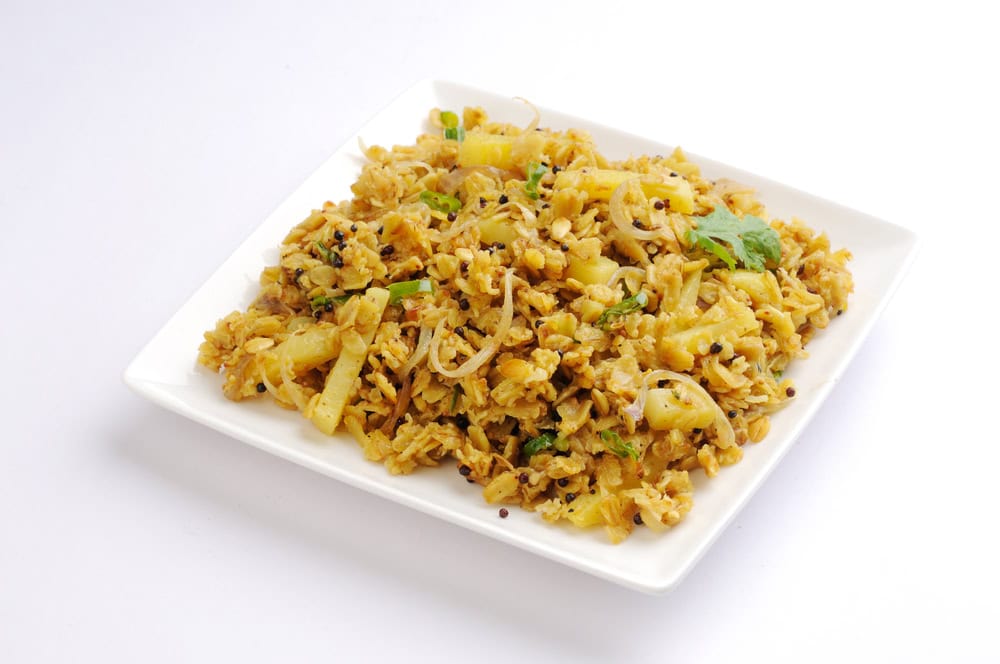
There’s something about winter that makes us crave comfort, be it a warm bowl of soup, a cup of hot ginger tea, or the smell of something cooking slowly on the stove. But if you’re living with diabetes, winter can be a tricky time. Cold weather often brings carb-heavy cravings, think parathas, creamy soups, and sweets that magically appear in every corner of the kitchen.
The good news? You don’t have to miss out. You can enjoy hearty, satisfying food that keeps your blood sugar steady and your taste buds happy. Nutritionist Mamta Sharma at Tata 1mg says, “Loading up on fiber is a science-backed shortcut to satiety, balanced blood sugar, and long-term wellness.“
Let’s walk through a few of my go-to diabetes-friendly winter recipes and the small choices that make a big difference.
1. Warm Masoor Dal Soup

Every winter, cook this at least twice a week. It’s comforting, packed with protein, and doesn’t spike your blood sugar like cream-based soups.
You’ll need:
½ cup red lentils (masoor dal)
1 small onion, chopped
1 tomato, chopped
1 carrot, diced
2 cups water or vegetable broth
1 tsp olive oil
½ tsp cumin seeds
Salt, pepper, and a pinch of turmeric
Heat the oil in a pan. Add cumin seeds, then onions. Once they soften, add tomatoes, carrots, and turmeric. Stir for a minute, then add the lentils and water. Let it simmer until the lentils are soft. Blend it if you want a smooth texture.
What you love about this soup is that it fills you up without feeling heavy. Lentils are slow-digesting, so your blood sugar won’t jump. And if you’re tired after work, this cooks faster than most takeout orders.
2. Oats Vegetable Khichdi

This is mostly everyone’s winter comfort bowl. It’s like a cozy blanket in food form. Oats replace rice here; they’re rich in soluble fiber, which helps manage blood sugar and cholesterol.
You’ll need:
½ cup rolled oats
¼ cup moong dal (split yellow lentils)
Mixed veggies (carrot, beans, peas)
1 tsp ghee (optional, but adds lovely flavor)
½ tsp mustard seeds
Curry leaves, if you have them
Salt, pepper, and turmeric
Pressure cook oats, dal, and veggies with water (about 2 cups). In a small pan, heat ghee, add mustard seeds and curry leaves, and pour it over the cooked mixture. Mix well.
It’s soft, mildly spiced, and perfect on cold evenings. Great for those who struggle with portion control. Because it’s high in fiber and protein, you’ll feel full without overeating.
3. Methi Thepla with Curd

Methi (fenugreek) leaves are winter’s gift. They’re slightly bitter, aromatic, and wonderful for blood sugar balance. Thepla is a Gujarati flatbread made with whole wheat flour and methi, simple, flavorful, and diabetes-friendly when made right.
You’ll need:
1 cup whole wheat flour
½ cup chopped methi leaves
1 tsp sesame seeds
½ tsp turmeric
Salt, chili powder (optional), and a little yogurt to knead the dough
Roll it out and cook on a hot tawa with minimal oil. Serve it with plain curd or a small bowl of dal.
If you’re craving paratha, make thepla instead. You’ll still get that satisfaction, but with more fiber and less oil.
4. Roasted Winter Vegetables with Tofu

Winter is the best season for fresh produce, carrots, cauliflower, turnips, and beets. Roasting them brings out their natural sweetness without adding sugar. Toss them with tofu, and you’ve got a balanced meal.
Here’s how:
Chop your veggies into bite-sized pieces. Add cubes of tofu. Drizzle with olive oil, sprinkle salt, pepper, and maybe a little garlic powder. Roast in the oven at 200°C (around 400°F) for 25–30 minutes.
Sometimes, you can prepare a big tray of this on Sunday and use it throughout the week. It tastes good warm or cold, and it’s an easy way to eat more fiber without feeling like you’re on a “diet.”
5. Cinnamon Millet Porridge

Now, let’s talk about breakfast. Most people reach for toast or cereal in the morning, but those can raise your blood sugar fast. A bowl of warm millet porridge is a better choice. It’s hearty, mildly sweet, and keeps you satisfied for hours.
You’ll need:
¼ cup foxtail or barnyard millet
1 cup unsweetened almond milk (or cow’s milk, if you prefer)
½ tsp cinnamon powder
1 tsp flaxseed powder
A few chopped nuts or seeds
Cook the millet in water until soft, then add milk, cinnamon, and flaxseeds. Stir till creamy. Add nuts before serving.
Cinnamon helps improve insulin sensitivity, and millet is a low-glycemic grain. I’ve noticed many people start enjoying breakfast again once they realize it doesn’t have to be bland.
6. Spiced Vegetable Stew (South Indian Style)

This one’s perfect when you want something flavorful without a long prep time. It’s similar to avial but lighter.
Boil mixed vegetables, pumpkin, beans, drumsticks, and carrots. In a pan, heat coconut oil (a teaspoon is enough), add mustard seeds, curry leaves, and a bit of crushed garlic. Toss in the boiled vegetables, add a spoonful of grated coconut, and cook for a few minutes.
It’s fragrant, filling, and pairs beautifully with a small serving of red rice or millets.
7. Herbal Winter Tea

It’s not a meal, but it deserves a spot here. This tea helps with digestion and keeps you warm.
Boil water with a small piece of ginger, cinnamon, tulsi leaves, and a pinch of fennel seeds. Sip after lunch or dinner.
8. Sweet Treat: Baked Apple with Nuts

Yes, you can have dessert. The trick is to make it work for your blood sugar.
Take one medium apple, slice it in half, and remove the core. Sprinkle cinnamon and add a few chopped almonds or walnuts. Bake at 180°C (350°F) for 10–15 minutes.
The apple softens, the nuts roast slightly, and the whole thing smells like winter. It’s naturally sweet, full of fiber, and far better than a sugary pudding.
A Few Simple Tips
Recipes aside, here’s what people do who manage diabetes in winter:
- Don’t skip meals. It’s tempting to “save calories,” but that backfires.
- Move a little after each meal. Even a short walk helps lower blood sugar.
- Keep hydrated. You may not feel thirsty in cold weather, but dehydration can raise glucose levels.
- Watch portion sizes. Healthy food still adds up if you eat double the serving.
- Enjoy what you eat. Stress affects blood sugar as much as sugar itself.
I’ll be honest, healthy eating isn’t about perfection. It’s about balance. Some days you’ll eat beautifully, other days you’ll crave something fried. That’s okay. What matters is the trend, not a single meal.
Winter brings the best ingredients to your kitchen. Use them well. Keep your meals warm, colorful, and full of life. Your blood sugar will thank you, and so will your taste buds.
Recommended Reads
Healthy Doesn’t Have to Be Boring: 7 Quick Indian Dinners Full of Protein
Beyond the Buzz: A Doctor’s Take on 6 Indian Fruits That Are True Nutrition Superstars
(The article is written by Mantasha, Executive, Clinical Health & Content, and reviewed by Monalisa Deka, Senior Health Content Editor)